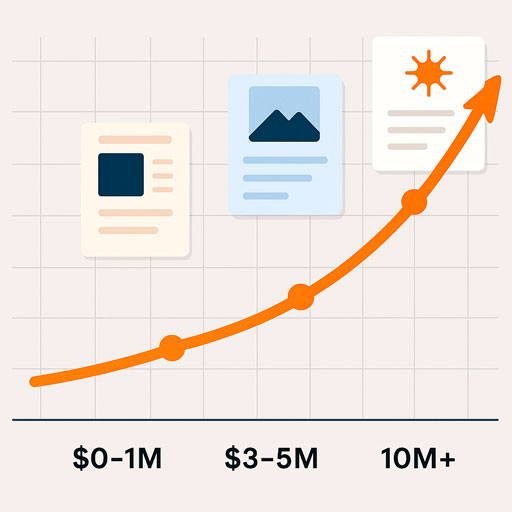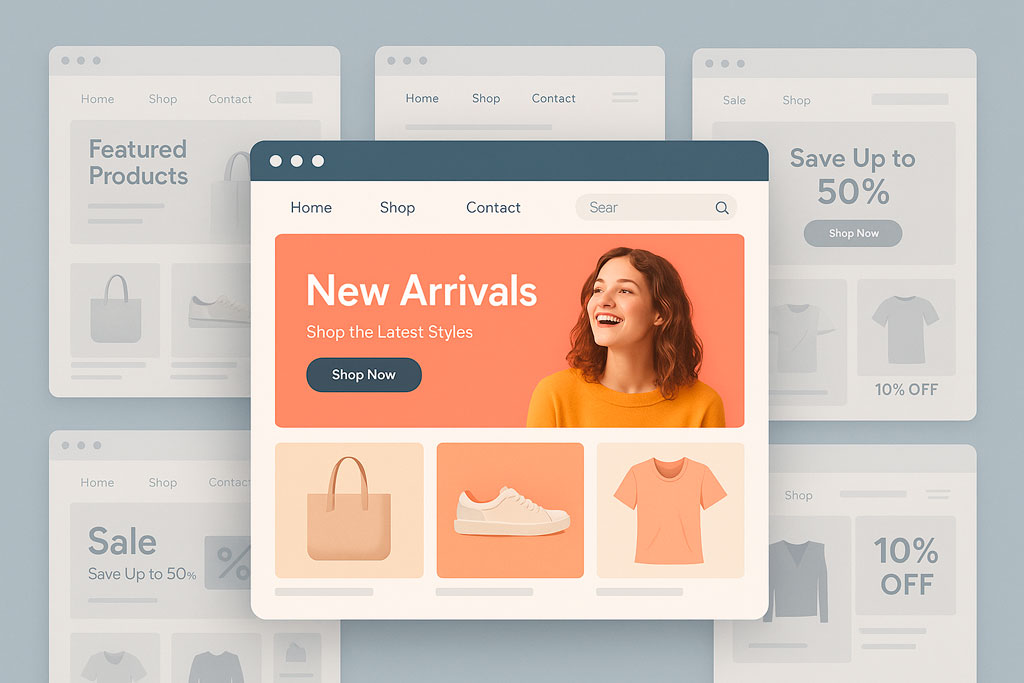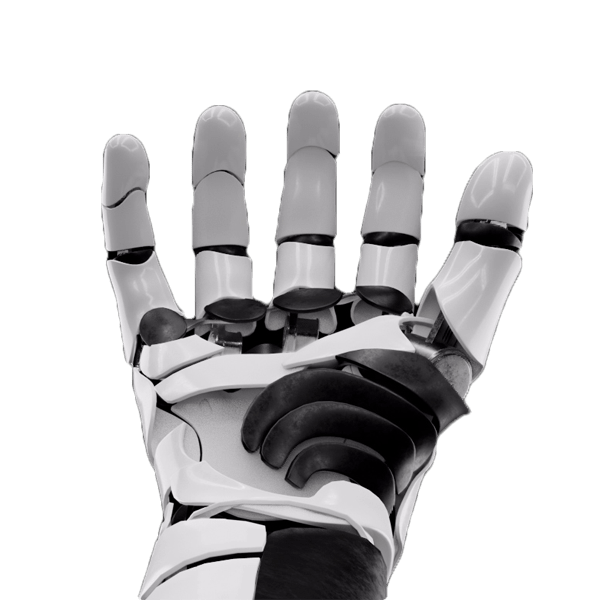Is your Shopify store converting, or just existing?
In a world of one-click buying and infinite tabs, attention isn’t enough. If your store doesn’t feel tailored, intuitive, and emotionally intelligent, it’s invisible.
This article breaks down why DTC brands that invest in custom Shopify stores outperform their competitors, not just in aesthetics, but in growth, retention, and customer lifetime value. Through five layers of research, from technical stacks to founder sentiment, we explore how personalization, UX, and modular infrastructure turn a storefront into a growth engine.
Actionable Takeaways
- Evolve intentionally: Start lean with themes, but plan for custom UX as you grow.
- Use hybrid models: Combine prebuilt themes with targeted personalization before going headless.
- Leverage UX for retention: Design navigation, content, and checkout to reduce friction and boost engagement.
- Build with scalability in mind: Frameworks like Hydrogen and tools like Shopify POS prepare your store for scale.
- Let data shape experience: Use zero-party data, AI recommendations, and loyalty flows to personalize every phase.
- Think ecosystem, not platform: Shopify’s strength lies in the apps, APIs, and CDP structure that power your decisions.
Want help applying this to your business? Let’s talk at Infinite Stair LLC.
Custom vs. Templated: Not Aesthetic, Strategic

The debate between custom-built Shopify stores and theme-based ones is often misframed as a question of design taste. But founders who’ve been through both sides of the equation know the truth: this isn’t about looks, it’s about leverage.
A well-designed template can absolutely support an early-stage DTC brand. Many Shopify merchants doing $2–8 million in annual revenue rely on well-chosen themes with smart UX enhancements, and most customers don’t even notice. “No one ever commented on the theme we use, as long as it fits our brand and works well,” said one founder managing multiple seven-figure stores. That’s not an excuse to stay small. It’s a reflection of good judgment: prioritize product-market fit and customer acquisition first. A theme is fast, efficient, and, when combined with clever content and mobile optimization, surprisingly effective.
But the picture changes fast as complexity grows. More SKUs, more traffic, international expansion, and omnichannel fulfillment start to strain the defaults. That’s when design becomes architecture, and the cost of sticking to a theme starts showing up in slower performance, limited personalization, and UX friction that bleeds conversion. In one documented case, the founder of The Feed saw a 5.24% lift in conversion rate and 10.28% increase in revenue per visitor after switching to a headless, custom Shopify setup. That kind of performance doesn’t come from “prettier visuals.” It comes from systems designed to reduce friction and amplify user intent.
Meanwhile, at the enterprise level, the numbers speak louder. Every one of the top 50 Shopify stores by gross sales runs on a custom build. Some invest $20K+ into a deeply customized theme. Others go full headless and spend over $100K for total control. These aren’t vanity projects. They’re infrastructure investments tied directly to retention, scalability, and customer lifetime value.So the real question isn’t “custom or template?”
It’s: How far does your store need to go to match your ambition?
Timing is Strategy: Customization by Growth Stage

One of the biggest mistakes early DTC founders make is assuming custom equals “better” at any cost. But in digital commerce, timing is leverage. Knowing when to customize is just as important as knowing how.
In the $0–$1M revenue stage, your biggest priority isn’t modular design, it’s clarity of offer. At this phase, using a high-converting Shopify theme like Dawn or Impulse paired with mobile-optimized visuals and a fast checkout flow is not a compromise, it’s a power move. Speed, iteration, and storytelling matter more than full creative control. Think of it as renting the stage before you decide to build the theater.
But around the $3M–$5M range, new challenges emerge. You’re scaling ad spend, testing bundles, personalizing flows, and your team starts feeling friction in the default structure. Pages slow down. SEO indexing becomes inconsistent. You can’t A/B test upsells without breaking templates. That’s when the shift to custom becomes not just a brand decision, but an operational one. A founder recently shared that moving to a modular custom store cut product page load times by half and unlocked 30% more flexibility for campaign-specific landers.
By $10M+, you’re not just customizing UX for aesthetics, you’re customizing around customer lifetime value. You want to track granular behavior, segment users by zero-party data, and deliver content experiences that shift based on geography, loyalty status, or even quiz inputs. At that level, headless commerce isn’t a buzzword, it’s infrastructure strategy. Whether you’re running Hydrogen for native Shopify synergy, or Next.js for performance and SEO, your store becomes part of the product itself.
So don’t ask “Should we build custom?”
Ask: “What is the smartest UX investment for this stage of our growth?”
UX is the Funnel: Personalization Without the Creep

Personalization used to mean putting someone’s name in an email. Now, it’s a strategic engine driving conversion, retention, and brand trust, when done right. The best DTC stores don’t just recommend more products. They guide customers through a journey that feels relevant, responsive, and respectful.
Start with zero-party data. When a user takes a quiz about their skin type or fitness goals, they’re telling you exactly what they need. That’s gold. Brands like Function of Beauty and Warby Parker use this data to build tailored product flows and reduce decision fatigue. But the true power comes when those answers shape site navigation, content blocks, bundle recommendations, and even shipping incentives. The entire UX shifts to say: “We see you.”
Then there’s behavioral data, every click, scroll, and bounce. Smart brands use Shopify’s pixel manager, CDPs like Daasity, and quiz tools like ConvertFlow or VQB to create real-time personalization layers. For example, if a user lands on the men’s running collection, browses size L, and hovers over reviews but doesn’t add to cart? That’s a signal. Show them UGC from runners in their demo, offer a fit quiz, or trigger a retargeting ad with the size they hovered. This is UX as a silent concierge, always listening, never annoying.
Want to build personalization that feels like service, not surveillance?
Let’s design your DTC store like it’s your best salesperson, clear, human, and optimized to convert.
Talk to Infinite Stair LLC.
Finally, remember: not all personalization happens on screen. Gymshark uses Shopify Plus and LoyaltyLion to deliver exclusive early drops to top-tier customers. Alo Yoga offers app-only product launches. Allbirds tracks in-store purchases via Shopify POS to customize online offers. These moves aren’t random, they’re signals that your store is becoming an ecosystem, not just a checkout page.
Real Brands, Real Results: What the Winners Have in Common
It’s easy to romanticize design. But the most successful custom Shopify stores aren’t just beautiful, they’re strategic systems built to convert, educate, and scale. When we analyze top-performing DTC brands, patterns emerge. And those patterns are replicable.
Take Gymshark: a masterclass in functional UX. Their custom navigation doesn’t just categorize products, it self-segments the customer. “Shop by activity” doubles as a behavioral filter that informs dynamic content and product recommendations. Their “Shop the Look” modules aren’t pretty flourishes; they drive bundling behavior and raise AOV. Loyalty perks are personalized. Checkout is lightning fast. This is performance design, not decoration.
Then there’s Allbirds. Their headless setup with Next.js enables global site performance and modular testing. Add to that an omnichannel stack that connects in-store POS data with online preferences, and you have a retail loop that’s tightly integrated across touchpoints. In one case, their “buy in-store, ship to customer” workflow, powered by Shopify Plus, increased conversion by reducing inventory friction at the moment of need.
Alo Yoga shows how content becomes conversion. Their homepage isn’t static, it adjusts to user interest, pushing collections based on behavior, highlighting new drops, and even prompting app downloads when mobile friction is detected. They observe, adapt, convert, all in real time. Plus, their tiered loyalty program builds belonging, not just discounts.
What do they all share?
- A unified customer data layer (Shopify + CDP)
- Headless or hybrid architecture for performance
- Zero-party data collection baked into UX (quizzes, filters, content)
- Personalization that enhances trust, not just clicks
In other words: they didn’t guess their way to 8-figure growth. They architected it.
The Stack Behind the Story: Architecture That Enables Speed and Scale
Every high-performing custom Shopify store has a story, but that story runs on a stack. And like any great infrastructure, the best stacks are invisible to the user but essential to the experience.
Let’s start at the frontend. If Shopify themes were once your prefabs and Hydrogen your Tesla, now Horizon is the smart city. Shopify’s new modular design system, launched in the Summer 2025 “Horizons” Edition, lets DTC brands build storefronts like you’d build with Lego and LLMs. Visual blocks, deeply customizable. AI-generated components that respond to prompts like “build a seasonal banner with snowfall.” Ten vertical-specific presets ready to go, but fully extensible when your brand’s growth demands it.
Hydrogen itself has grown up. The Hydrogen Visual Editor now gives teams real-time collaboration, visual editing with code integrity (via GitHub PRs), and AI-assisted block generation, all while maintaining performance and scalability. It’s not just headless, it’s frictionless. You design like a marketer, deploy like a dev, and iterate like a growth team.
Need more power? Enter Next.js, the heavyweight for DTC brands prioritizing custom routing, SEO, and total control. Used by Allbirds and K-Swiss, its server-side rendering and incremental static generation mean lightning-fast page loads even under pressure. It’s performance, reimagined.
Backend? Shopify has rebuilt for resilience. Their pod architecture, isolated clusters with MySQL, Redis, Kubernetes, and CDN edge logic, lets brands scale without breakage. Add batch-capable Shopify Functions 2.0, POS-specific rules, and flat shipping for split orders, and your checkout becomes a conversion engine. Verishop scaled to 40K checkouts per minute. That’s not magic, it’s engineering.
Want speed? Shopify just shaved 2 seconds off default checkout loads. Want control? The new dev environment offers instant reloads, tunnel-free local testing, and inline AI suggestions for Functions, GraphQL, and Polaris components. Want precision? Web Vitals and real-time analytics are now built-in.
And the ecosystem? Stronger than ever. Plug in Contentful or Sanity for CMS logic. Use Algolia for live search, Daasity for lifecycle analytics, Klaviyo for triggered loyalty flows. These aren’t “tech stacks.” They’re instruments in a performance orchestra.
Just don’t forget the rule: build only what growth demands. Start with the journeys that matter, PLPs, PDPs, cart, checkout. Modularize what converts. Then layer personalization, speed, and narrative like compounding interest.
The smartest brands don’t just launch stores.
They architect ecosystems, with Shopify as the operating system of scale.
The Future Is Custom: Shopify as Creative Infrastructure
The line between commerce and experience is gone. Your storefront is your brand. And Shopify, especially post-Horizons, is no longer just a platform. It’s a creative infrastructure for growth.
Where themes once served as scaffolding, now Horizon Blocks, AI-assisted design, and headless frameworks like Hydrogen and Next.js let your store evolve like software, not static layouts. You’re not designing “pages.” You’re building dynamic, behavior-driven systems that listen, learn, and adapt in real time.
What used to take six-figure dev teams and months of deployment now happens in days. A quiz flows into a personalized bundle. A user scrolls, and the homepage adapts. A marketer launches a holiday campaign without ever opening code. That’s not convenience, it’s leverage.
So if you’re still asking:
“Should we customize?”
Flip the question.
Ask:
“What would our store look like if it truly worked for us?”
“How much growth are we leaving on the table by playing small?”
Because the best DTC brands aren’t just designing prettier stores.
They’re building smarter engines for lifetime value.Want a growth strategy that maps tech to customer psychology?
Let’s architect it together at Infinite Stair LLC.





